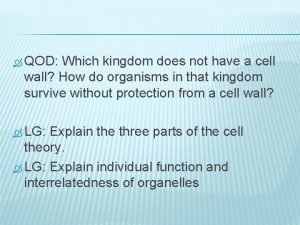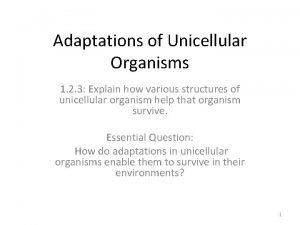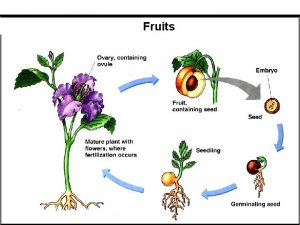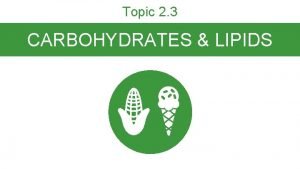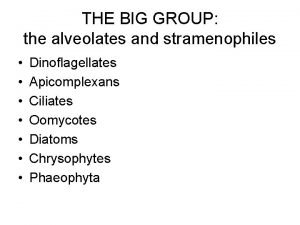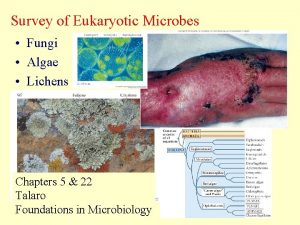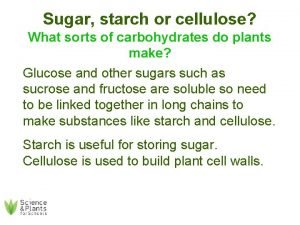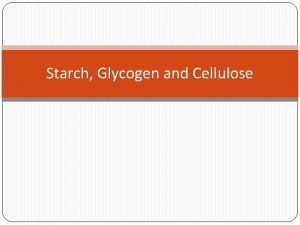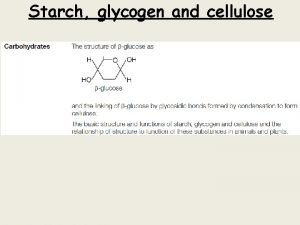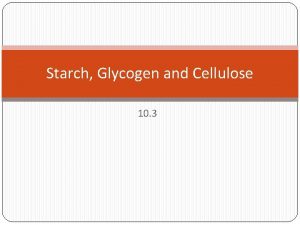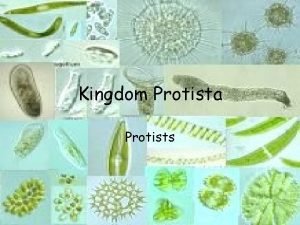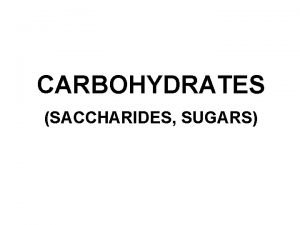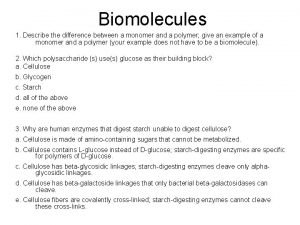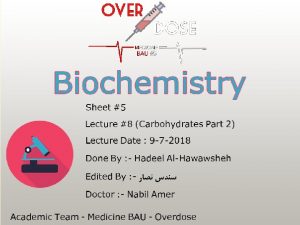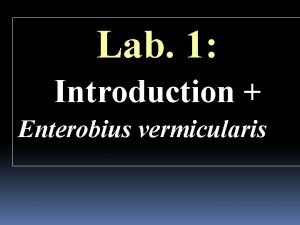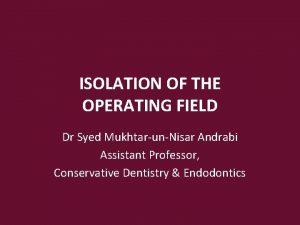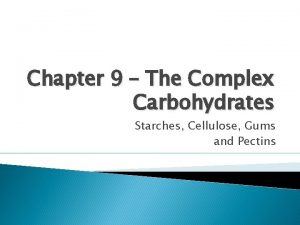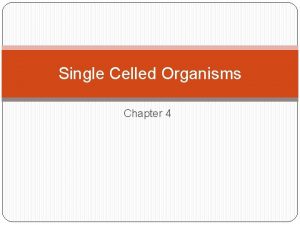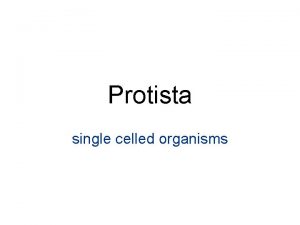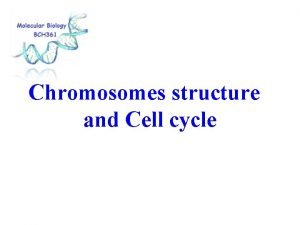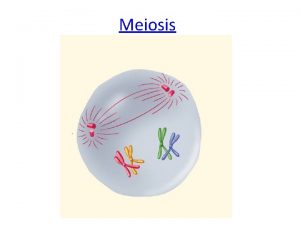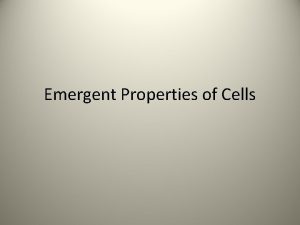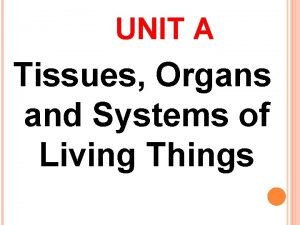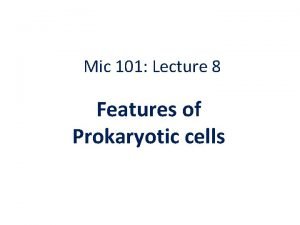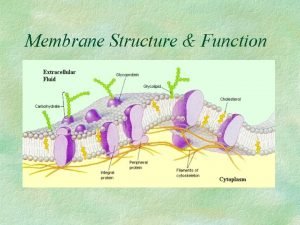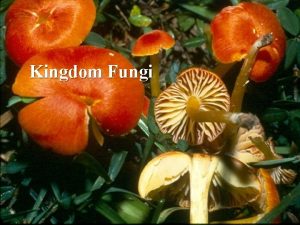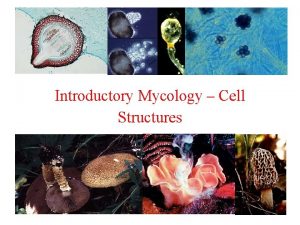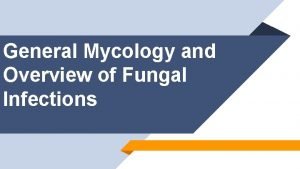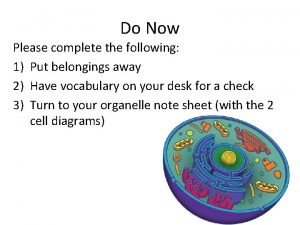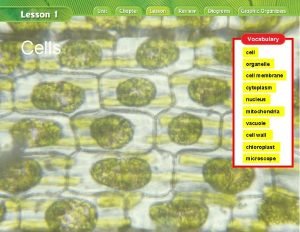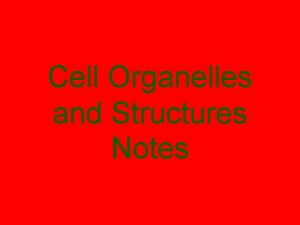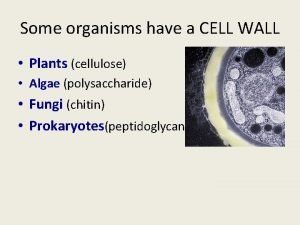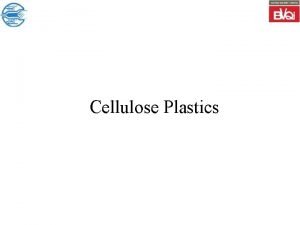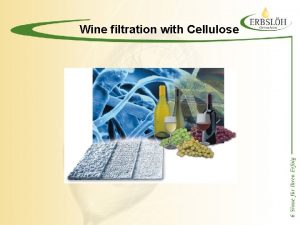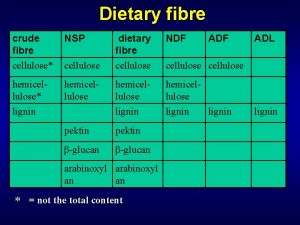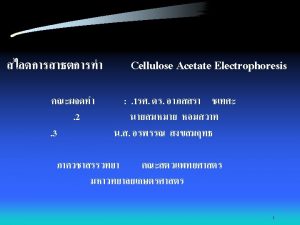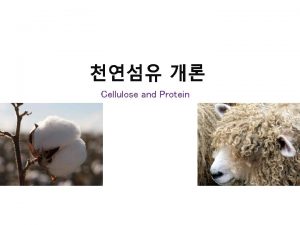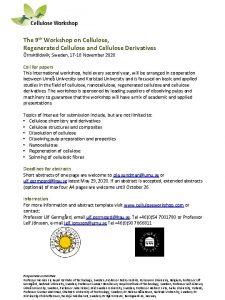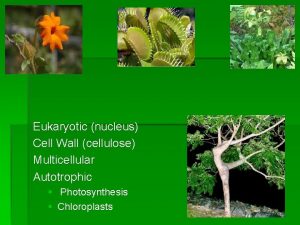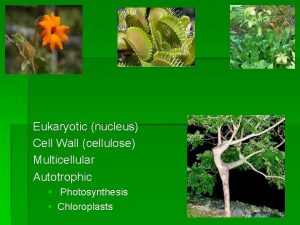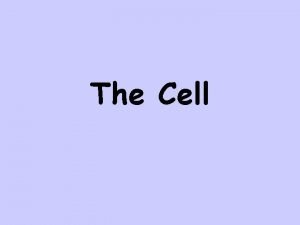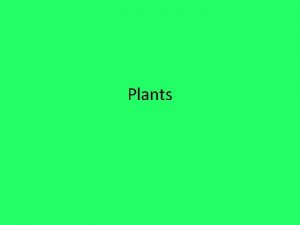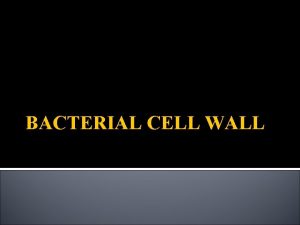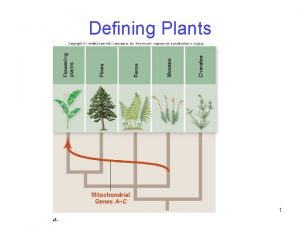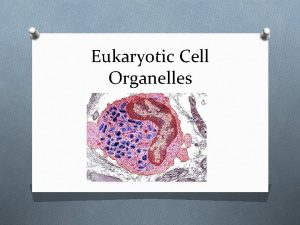Some organisms have a CELL WALL Plants cellulose



























































- Slides: 59

Some organisms have a CELL WALL • Plants (cellulose) • Algae (polysaccharide) • Fungi (chitin) • Prokaryotes(peptidoglycan)

What does the cell wall do? 1. Scaffolding - mechanical support and structure 2. Protection 3. Involved in Cell-cell communication 4. Maintenance of structure (turgor)

Movement across the cell membrane

Where is the water in your body?


Where are membranes located? 1. Cell membrane (double membrane) 2. Organelles (membrane -bound) can be single or double membrane) • Secret Universe • Introduction to cell membrane

What do membranes do? All cells live in an aqueous environment (surrounded by water, ions and molecules) • …they must control what gets in (nutrients) and out ( waste products and signalling molecules) • they need to communicate with each other… How is this achieved? . .

What do membranes do? 1. Protective barrier 2. Cell-Cell signalling 3. Transport of nutrients, products and waste products 4. Localisation of function within organelles Cell membrane function

Membranes are: 1. Semi-permeable: controls entry and exit of substances 2. Self-sealing 3. Flexible, mobile fluid mosaics

Let’s meet the components of the cell membrane

Phospholipid bilayer polar hydrophilic heads nonpolar hydrophobic tails polar hydrophilic heads

Substances can be hydrophilic or hydrophobic



Membrane Proteins Each membrane has its own unique set of proteins Proteins act as: • CHANNELS to get substances in or out of the cell or organelle • PUMPS to get substances in or out of the cell or organelle • RECEPTORS to allow the cell or organelle to respond to a stimulus

3. 4. 2 Explain the importance of the membrane proteins to transport across the membrane

Protein channels move substances from one side of membrane to the other

Protein pumps move substances from one side of membrane to the other

Protein receptors

Membranes have sugars (carbohydrates) attached to their surfaces • ‘Chemical identification cards’ • Used for cell communication • Used by the immune system to identify self or ‘non-self’ (invaders)

Blood cells have glycoproteins (blood type)

Let’s Review… Let's build a membrane from scratch… And now…let’s make a membrane!


Movement across the Cell Membrane

How do things get into and out of our cells? PASSIVE MECHANISMS These don’t require energy 1. Simple diffusion 2. Facilitated diffusion 3. Osmosis ACTIVE MECHANISMS These require energy to transport substances (often against their concentration gradient) 1. Protein pumps 2. Endocytosis/ exocytosis

3. 5. 4 State that the energy for diffusion comes from the kinetic energy of random movement of molecules and ions Particle theory states that all matter consists of many, very small particles, which are constantly moving, or in a continual state of motion. The degree to which the particles move is determined by the amount of energy they have and their relationship to other particles

3. 4. 2 Explain the importance of the membrane proteins to transport across the membrane


3. 5. 1: Diffusion: Definition • Diffusion is the net movement of particles from a region of their higher concentration to a region of their lower concentration down a concentration gradient, as a result of their random movement • Works for small particles

Simple Diffusion 2 nd Law of Thermodynamics governs biological systems: the universe tends towards disorder (entropy) Diffusion: movement of small, soluble particles from high low concentration

Diffusion Movement is from HIGH to LOW concentration • “passive transport” • no energy needed diffusion movement of water osmosis

3. 5. 3 substances move into and out of cells by diffusion through the cell membrane; this is a dynamic process (always happening) • Gas exchange in the lungs • Gas exchange in plants

Gas exchange between lungs and blood is via diffusion

Gas exchange in plants is via diffusion

3. 4. 2 Explain the importance of the membrane proteins to transport across the membrane

Facilitated Diffusion Facilitated diffusion is diffusion of specific molecules through protein channels in the cell membrane – no energy is required facilitated = with help open channel = fast transport high low

Factors affecting diffusion 1. Concentration gradient 2. Temperature 3. Surface area for diffusion 4. Distance for diffusion 5. (size of particle) 6. (charged or uncharged)

Factors affecting the rate of facilitated diffusion are the same as for simple diffusion 1. Concentration gradient 2. Temperature 3. Surface area for diffusion 4. Distance for diffusion

Osmosis • water diffuses through partially permeable membranes from higher to lower concentrations by osmosis • water moves in and out of cells by osmosis through the cell membrane

Osmosis: Definition • Osmosis is the net movement of water molecules from a region of higher water concentration [potential] (dilute solution) to a region of lower water concentration [potential] (concentrated solution), through a partially permeable membrane • Like other types of diffusion, osmosis is a dynamic process [achieves balance (equilibrium) but never stops]

Movement of water across membranes involves BOTH simple AND facilitated diffusion

Factors affecting osmosis 1. Concentration gradient 2. Temperature 3. Surface area for diffusion 4. Distance for diffusion

Comparing ‘water concentration’ of different solutions Direction of osmosis is determined by comparing total solute concentrations on either side of the membrane: • Hypertonic - more solute, less water • Hypotonic - less solute, more water • Isotonic - equal solute, equal water hypotonic hypertonic net movement of water

freshwater balanced saltwater

Osmosis is the diffusion of water across a semi-permeable membrane Facilitated diffusion of water from high concentration of water to low concentration of water across a semi-permeable membrane

Examples of Osmosis in Biology • Absorption of water by plant roots. • Re-absorption of water in the kidney. • Re-absorption of tissue fluid into blood capillaries. • Absorption of water in the GI tract

Water moves across a membrane from the hypotonic solution to the hypertonic solution • Animation of osmosis 1 • Animation of osmosis 2: why water balance matters


How do things get into and out of our cells? PASSIVE MECHANISMS These don’t require energy 1. Simple diffusion 2. Facilitated diffusion 3. Osmosis ACTIVE MECHANISMS These require energy to transport substances (often against their concentration gradient) 1. Protein pumps 2. Endocytosis/ exocytosis

Active transport 1: Protein pumps • Active transport uses • Animation energy (ATP) to • protein pumps in plants transport substances AGAINST a concentration gradient low into/out of the cell • The energy is used to change the shape of the ATP ‘protein pump’ and thus import/export specific molecule high

3. 6. 2 Discuss the importance of active transport as a process for movement across membranes: e. g. ion uptake by root hairs and uptake of glucose by epithelial cells of villi and kidney tubules

3. 6. 3 Explain how protein molecules move particles across a membrane during active transport


Transport summary simple diffusion facilitated diffusion active transport ATP

Active Mechanisms: Endocytosis and Exocytosis • A simple one. . . • Animation 2 Endocytosis/ exocytosis are import/export of materials by infolding/outfolding of the cell membrane

Cell responses 3. 7. 1 Explain the effects on plant tissues of immersing them in solutions of different concentrations by using the terms turgid, turgor pressure, plasmolysis and flaccid


3. 7. 3 Explain the importance of osmosis on animal cells and tissues

3. 7. 4 Explain how plants are supported by the turgor pressure within cells, in terms of water pressure acting against an inelastic cell wall
 Wine roots servian
Wine roots servian Middle lamella
Middle lamella Cell wall vs cell membrane
Cell wall vs cell membrane Which kingdom does not have a cell wall?
Which kingdom does not have a cell wall? Why do organisms interact with other organisms
Why do organisms interact with other organisms Unicellular/multicellular
Unicellular/multicellular In unicellular organism
In unicellular organism Sound wall phonemic awareness
Sound wall phonemic awareness Wall to wall chris brown
Wall to wall chris brown One and a half brick wall
One and a half brick wall Members used to carry wall loads over wall openings
Members used to carry wall loads over wall openings Fruit develops from ovary
Fruit develops from ovary Storage of carbohydrates
Storage of carbohydrates Stramenophiles
Stramenophiles Ascomycetes diagram
Ascomycetes diagram Schulze's test for cellulose
Schulze's test for cellulose Cellulose starch glycogen
Cellulose starch glycogen Cellulose amylose amylopectin and glycogen
Cellulose amylose amylopectin and glycogen Cellulose starch glycogen
Cellulose starch glycogen Cellulose plates in dinoflagellates
Cellulose plates in dinoflagellates Define permiation
Define permiation Simple saccharides
Simple saccharides Whats the difference between a monomer and a polymer
Whats the difference between a monomer and a polymer Cellulose introduction
Cellulose introduction Cellulose plant
Cellulose plant Cellulose tape swab
Cellulose tape swab Cellulose wafers dentistry
Cellulose wafers dentistry Starch and liquid combinations
Starch and liquid combinations Surfathix
Surfathix Living wall plants
Living wall plants Vascular vs nonvascular plants
Vascular vs nonvascular plants Vascular vs nonvascular plants
Vascular vs nonvascular plants Classify non flowering plants with examples
Classify non flowering plants with examples C3 plants vs c4 plants
C3 plants vs c4 plants Animal-like protist
Animal-like protist Single cell organisms
Single cell organisms Cell division in multicellular organisms
Cell division in multicellular organisms 8 vertices 12 edges 6 faces
8 vertices 12 edges 6 faces In some plants like grass monstera and banyan tree
In some plants like grass monstera and banyan tree Sometimes you win some
Sometimes you win some Sometimes you win some
Sometimes you win some Countable and uncountable nouns ice cream
Countable and uncountable nouns ice cream Contact vs noncontact forces
Contact vs noncontact forces Some say the world will end in fire some say in ice
Some say the world will end in fire some say in ice Some say the world will end in fire some say in ice
Some say the world will end in fire some say in ice Some trust in chariots and some in horses song
Some trust in chariots and some in horses song Meiosis
Meiosis Ispindle
Ispindle Emergent properties
Emergent properties Which kingdoms have photosynthetic organisms? *
Which kingdoms have photosynthetic organisms? * Cell membrane function
Cell membrane function Eubacteria characteristics chart
Eubacteria characteristics chart Prokaryotic cell of bacteria
Prokaryotic cell of bacteria Cell membrane function
Cell membrane function Kingdom fungi cell wall
Kingdom fungi cell wall Fungi spore
Fungi spore Koh test positive result
Koh test positive result Ingestion
Ingestion Mitochondria vocabulary
Mitochondria vocabulary Cell wall function
Cell wall function



